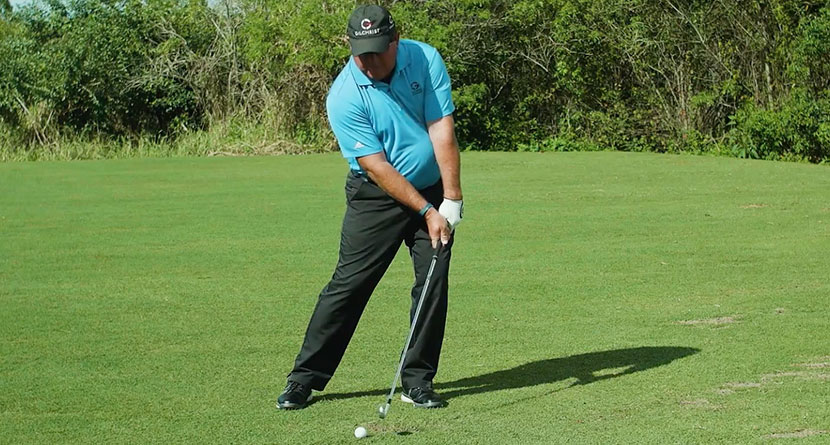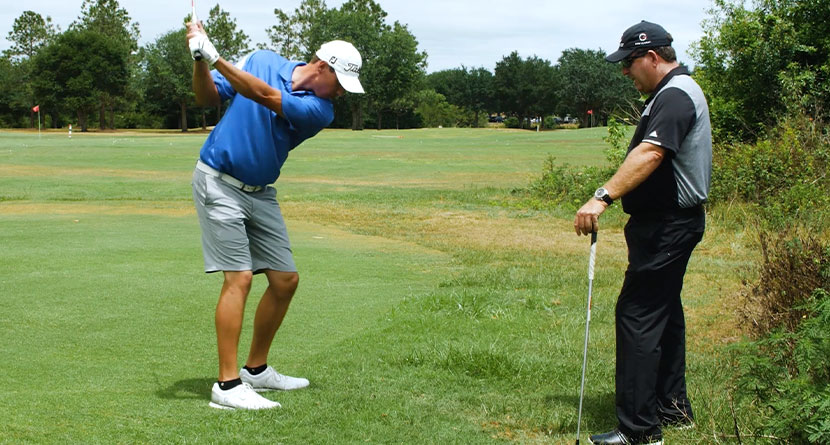Many golfers have found themselves with an inordinate amount of time on their hands in the past few weeks while the coronavirus pandemic has forced local and federal governments to enact certain stay-at-home and shelter-in-place orders.
In an effort to help our audience use this time somewhat productively, we’ve reached out to our Master Faculty of top instructors from around the country to find out what the most important aspect of your game to work on is and what their best tips were for getting the most out of practicing your game from home.
Gary Gilchrist, Golf Digest Best In Florida (#19); Golf Magazine Top-100
Putting. Buy a putting mat, and work on your stroke. Your goal is to get as good as you can from 3 to 9 feet. This will improve the face/path consistency and control.
Work on your goal setting. Visualize playing 18 holes — use your home course to do this. Map it out. Create a plan for improvement in the five main areas – technical, mental, physical, personal and strategy.
Do club awareness drills without a ball. Use a mirror in your house to work on your plane and setup and the consistency of your set up. Look online and find your favorite player and screenshot some of your favorite positions in their swing
Finally, create an indoor gym as best as you can. Work on endurance, strength training and flexibility
Joe Hallett, Golf Digest Best In Tennessee (#1); Golf Magazine Top-100
Putting is an always deal, but most important is to work on speed control and seeing — just like pitching pennies to the wall — how close you can lag 3 balls in a row at lengths of 30-40 feet on any surface.
This will save you at least a stroke and a half on the course.
Chris O’Connell, Golf Digest Best In Texas (#8); Golf Magazine Top-100
Obviously putting is something that can be done indoors. While putting a straight 8-footer on a perfect surface might make you feel good, it doesn’t translate well to the course.
Try putting to a much smaller target than the size of a hole, and if you have some room, work on some speed drills instead of knocking in the same short putt repeatedly. Being able to control your speed is paramount to becoming a great putter. From there, you can pick a line — not the other way around.
Josh Zander, Golf Digest Best In California (#8); Golf Magazine Top-100
I am always a fan of working on my weaknesses to make them strengths, so it is more about what needs improvement. You may be limited to what you can do based on the space in your house. The cool thing about not being able to hit balls is that you can work on your golf swing without worrying about your ball flight or your score!
My biggest piece of advice is to improve one thing at a time and give it time and reps. For example, if you are looking to make a bigger turn to increase your power, find some drills and put in reps with full attention and intention to every repetition. Quality over quantity! I recommend doing this a few minutes every hour so you are constantly revisiting the move and getting in some reps. This starts to communicate to your brain the new movement pattern which will eventually become the dominant pattern.
It is important to have a feedback mechanism so you know that the rep is correct. After all, practice makes permanent, not perfect. If you want to get there even faster, celebrate every correct rep. Emotion is the anchor that cements good moves in your brain and helps you remember the right move the next time.
One of the biggest problems is that golfers try to fix many too moves at the same time. Pick one move and make it better. Once you cement it in, pick another move. Most importantly, enjoy the learning process.
Dr. Joe Parent, Golf Digest Top-10 Mental Game Expert; Best-Selling Author Of Zen Golf
As a mental game coach, I can promise you that spending a few minutes each day playing rounds in your imagination will keep your game sharper than you can imagine. Studies have shown that visualizing good technique and performance improves outcomes comparably to physical practice. Be sure to include a full pre-shot routine, swing and the post-shot routine I teach for each shot.
So find a place that’s pretty quiet — or put in your earbuds — and a comfortable chair. You can even synchronize your breathing to the visualization, taking a nice deep settling breath before you imagine yourself walking into the shot. By the way, Jack Nicklaus did a visualization — that included seeing himself walk into address —before every shot he played; he called it “going to the movies.”
If you want to add some movement, for each shot you can walk into an address position, cross your arms over your chest with fingertips on opposite shoulders, take your posture and turn back and through. Again, reflect on how the movement felt as a post-shot routine and replace it if it wasn’t quite what you had in mind.
If you have carpeting, you can practice everything you would do on the practice putting green with the exception of big slopes. You may be surprised that some areas in your carpet have subtle breaks to them!
For competition, play the Leapfrog Game™. You can play against yourself for your best score, or as a competition with a fellow golfer at home or by video connection.
Shawn Cox, Golf Digest Best In California (#29)
During this break from our usual practice at golf courses, I suggest you work on your putting; most importantly your pre-shot routine. There are a couple of things the best players do in their routines. The amount of time for every putt should be consistent. You should have the same number of looks at the hole and the same number of practice swings if you use them.
Work on setting your feet while looking at the intended target. This is a big-time difference from most amateurs. In setting your feet while looking at the target, you are getting your subconscious comfortable in your alignment of all your body parts. It’s better to have it believe you are aimed correctly than to try to make your feet parallel to your clubface.
Why is that when we play our best golf, we aren’t thinking and we just see the target in our minds? You can have your mind in another place than where you are looking. An example is you can be looking at the ball but your mind sees the line of the putt. Before pulling the trigger on the putt, please pick out a dimple on the ball (Quiet Eye Technique) and send your attention out to the intended picture of the putt in your mind and then pull the trigger.
Do this routine over and over going from looking down the line of the putt to at the ball and then hitting the putt. When you get back to playing on the course, you won’t have to think about this routine and you will be able to putt even more consistently than pre-COVID.













